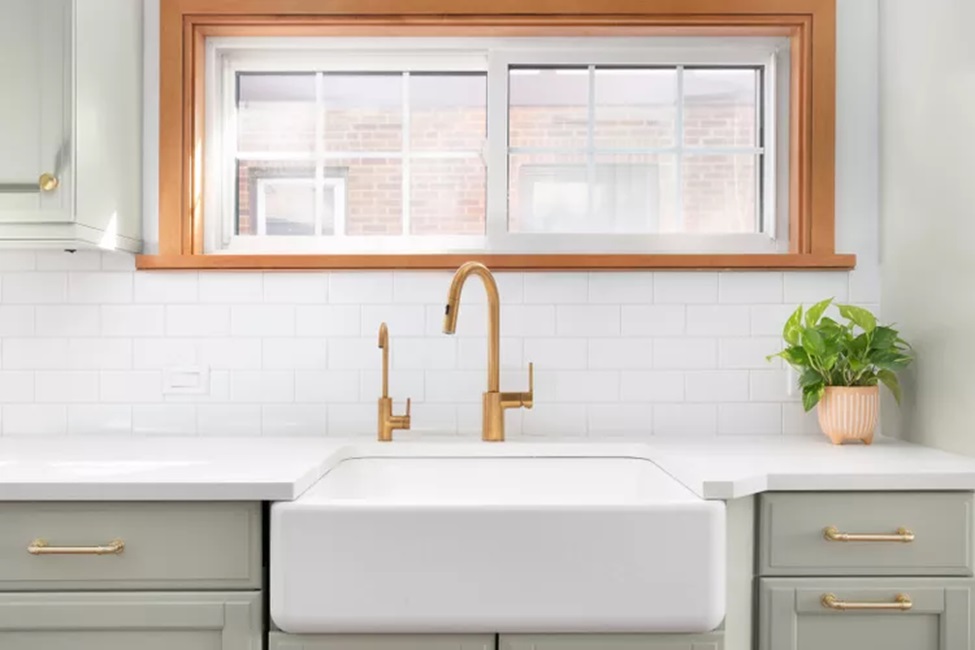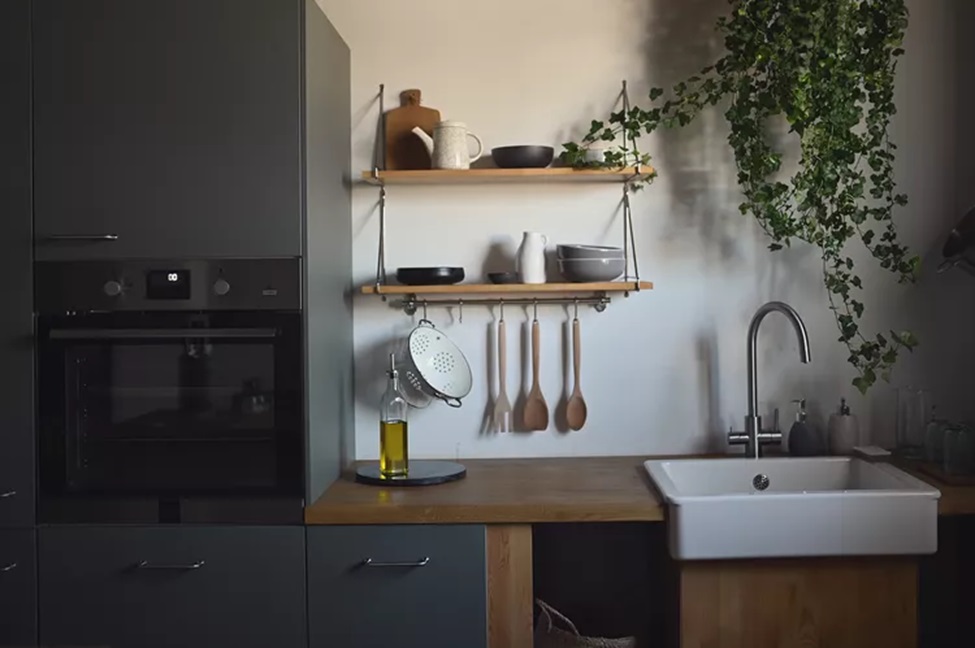Consider the following advantages and disadvantages before investing in an apron front sink.
A porcelain farmhouse sink is a sought-after kitchen feature with good reason. These sinks are not only beautiful, spacious, and timeless, but they also impart a distinctive look to any kitchen they adorn. However, before indulging in this upscale kitchen addition, it’s crucial to consider a few factors. Many kitchen renovators realize post-installation that fragile dishware can easily break in these sinks, and maintaining the pristine appearance of a white porcelain sink requires significant effort. To avoid surprises or regrets down the line, it’s advisable to ponder these six factors now, taking into account your kitchen sink usage patterns, including cooking and dishwashing habits.
1. Dishes Will Break More Easily

The deep basin characteristic of a farmhouse sink, which makes it well-suited for dishwashing, also increases the likelihood of inadvertently breaking glasses and dishes. Placing stemmed wine glasses near the porcelain sink poses a risk of them being knocked over into the porcelain bowl, leading to breakage. Zoe Gowen from Southern Living encountered this downside to her cherished farmhouse sink and devised a solution: using a sink protector ($18, amazon.com). This accessory not only safeguards her glasses but also protects the sink from scratches simultaneously.
2. The Porcelain Will Get Stained (and Potentially Chipped)

Choosing a classic white porcelain farmhouse sink may lead to inevitable staining, necessitating regular cleaning to maintain its sparkle. Utilizing baking soda for scrubbing aids in removing sauce stains without causing scratches due to its mild abrasive nature. If the prospect of frequent cleaning is unappealing, exploring farmhouse-style sinks in alternative materials like stainless steel might be a prudent choice.
For those who frequently cook with cast iron pans or other substantial cookware, there is a risk of chipping a porcelain sink. Practicing caution during dishwashing and investing in a protective sink mat can help prevent such chips.
3. There Are Other Options Besides Porcelain

When envisioning a farmhouse sink, the image of a pristine white porcelain one often comes to mind. However, there are numerous alternatives available, so it’s essential to select one that aligns with your kitchen design and lifestyle. For instance, stainless steel stands out for its durability and resistance to chipping, unlike porcelain. Copper is another popular choice with its attractive color, but it tends to develop a patina over time, requiring polishing to minimize the effects of oxidation. If you desire the porcelain aesthetic with a slightly lower cost and reduced maintenance, fireclay could be an ideal option. For a luxurious touch, a polished marble farmhouse sink is an option, though it comes at a higher price and requires resealing every few years.
4. They’re Not Just for Farmhouse Kitchens

While apron-front sinks are a popular design option for farmhouse-style kitchens, they can also enhance kitchens of various other styles. A streamlined stainless steel or porcelain apron-front sink seamlessly integrates into a modern kitchen, while a stylish concrete variant complements an industrial-inspired kitchen.
If a spacious and deep sink basin aligns with your cooking and dishwashing preferences, an apron-front sink might be the most practical choice for you, regardless of your home decor style. Explore the material options below to discover one that aligns with your home’s aesthetic.
5. Consider Your Kitchen Habits Before Choosing Single or Double Basin

Like many sink varieties, farmhouse sinks are available in both single- and double-bowl designs. This decision should be made with the same level of consideration as choosing the sink material. Reflect on your cooking and dishwashing habits. If you engage in substantial food prep in the sink, a large single-bowl sink might be the optimal choice. If you prefer handling some dishes while dinner is in progress, a double-basin sink that allows you to wash dishes on one side without disrupting the rinsed salad greens on the other side could be the ideal fit for you.
6. You’ll Likely Have to Adjust Your Countertops

When considering an upgrade to a farmhouse sink in your existing kitchen, be prepared for potential countertop adjustments. Due to the wider and deeper dimensions of farmhouse sinks compared to standard sinks, modifications to the countertop and potentially the cabinets below are necessary to accommodate the new sink. If opting for a hefty porcelain or stone variant, it’s crucial to verify whether the cabinets can bear the weight; reinforcement might be required. Even if you can retain your current cabinets, a repaint or touch-up of the fronts is likely necessary post the sink installation.




